Who Controls the User Experience? AMD’s Carrizo Thoroughly Tested
by Ian Cutress on February 4, 2016 8:00 AM ESTBenchmark Results: CPU Short Form
Here are our results from our CPU tests. A reminder of our systems:
| System Overview | |||||
| µArch | APU | Base / Turbo MHz | Memory | Channel | |
| HP Elitebook 745 G2 | Kaveri | A10 PRO-7350B (19W) | 2100 / 3300 | 8 GB | Dual |
| HP Elitebook 745 G3 | Carrizo | PRO A12-8800B (15W) | 2100 / 3400 | 4 GB | Single |
| Toshiba Satellite E45DW-C4210 |
Carrizo | FX-8800P (15W) | 2100 / 3400 | 8 GB | Single |
| HP Pavilion 17z-g100 |
Carrizo | A10-8700P (15W) | 1800 / 3200 | 8 GB | Single |
| Lenovo Y700 | Carrizo | FX-8800P (35W) | 2100 / 3400 | 16 GB | Single |
Three Dimensional Particle Movement (3DPM)
3DPM is a self-penned benchmark, derived from my academic research years looking at particle movement parallelism. The coding for this tool was rough, but emulates the real world in being non-CompSci trained code for a scientific endeavor. The code is unoptimized, but the test uses OpenMP to move particles around a field using one of six 3D movement algorithms in turn, each of which is found in the academic literature. This test is performed in single thread and multithreaded workloads, and uses purely floating point numbers. The code was written in Visual Studio 2008 in Release mode with all optimizations (including fast math and –Ox) enabled. We take the average of six runs in each instance.
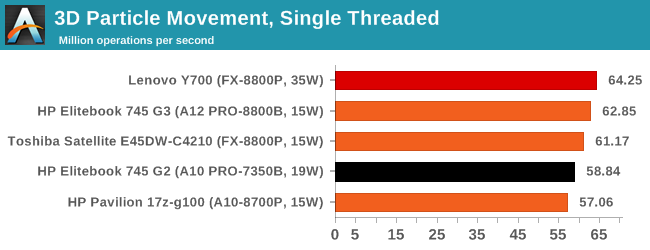
In the single threaded mode, the 35W part is able to boost to a higher frequency, giving it the lead. The interesting element here is the mix of 15W and 19W results, putting the Pavilion with the A10-8700P at the bottom. This comes through in the frequency charts, where the Kaveri was able to boost above 3000 MHz often:
For multithreaded:

The processors line up more as expected, with the 8800P still taking the top spot with Carrizo’s architecture resources showing the ability to scale better.
WinRAR 5.01
WinRAR is a compression tool to reduce file size at the expense of CPU cycles. We use the version that has been a stable part of our benchmark database through 2015, and run the default settings on a 1.52GB directory containing over 2800 files representing a small website with around thirty half-minute videos. We take the average of several runs in this instance.
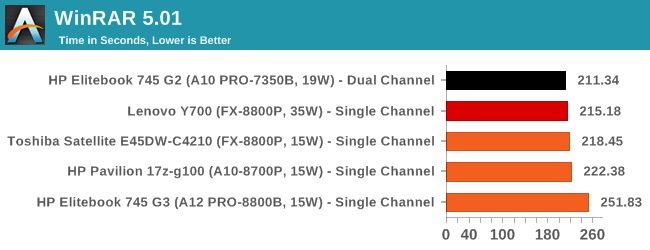
WinRAR is a benchmark which loves DRAM speed, hence why the dual channel Kaveri system wins despite the increased horse power and thermal benefits of the Lenovo Y700. Unfortunately, the single channel design methodology permeates through the OEMs because of the factor of price and upgradability – if a machine is sold with only one module, it can be upgraded later. The other element is that the Y700 design also caters for Carrizo-L as pin compatible, so despite having two modules in there the system will always be limited to single channel. This is, perhaps, a grave error with any situation that is memory limited.
POV-Ray 3.7 beta
POV-Ray is a common ray-tracing tool used to generate realistic looking scenes. We've used POV-Ray in its various guises over the years as a good benchmark for performance, as well as a tool on the march to ray-tracing limited immersive environments. We use the built-in multithreaded benchmark.
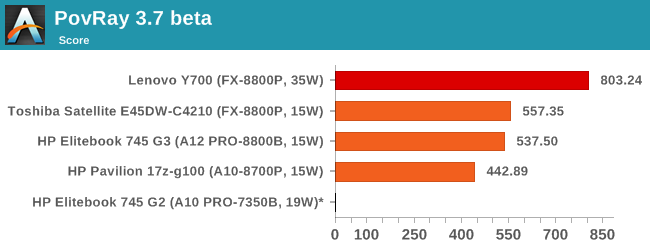
For whatever reason, our script failed to record the score when it came to the Kaveri system and we only realized after the systems were returned. Nonetheless, the capabilities of the other systems shine through, showing that the A10-8700P can seem to have a big frequency discrepancy against the FX-8800P models. In actual fact this can be attributed to the temperature limitations on the Pavilion:
The full threaded nature of POV-Ray means that we’re on the limits of the A10 APU already, but when the system hits 55C or so, it clocks back to 2100 MHz to save a few extra degrees.
If we compare that to the Toshiba:
The Toshiba system also hits a temperature limit, but the barrier is way up at 70C, causing the system to knock back to 64C. The CPU frequency difference between the two does not look that different despite the +25% score in favor of the Toshiba, making it slightly deceptive.
HandBrake
HandBrake is a freeware video conversion tool. We use the tool in to process two different videos - first a 'low quality' two hour video at 640x388 resolution to x264, then a 'high quality' ten minute video at 4320x3840. The low quality video scales at lower performance hardware, whereas the buffers required for high-quality can stretch even the biggest processors. At current, this is a CPU only test.
Unfortunately HandBrake also had issues on a couple of systems – the Lenovo and the Toshiba. All the HP systems gave results, where the HP Pavilion came out on top:


If we compare CPU use, the HP Pavilion is much better at using all of its threads than the Elitebook 745 G3:
7-Zip
7-Zip is a freeware compression/decompression tool that is widely deployed across the world. We run the included benchmark tool using a 50MB library and take the average of a set of fixed-time results.
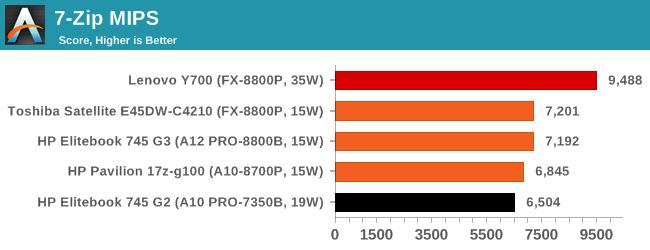
Despite being a purely in-memory benchmark, the G2 shows some inefficiency compared to the Carrizo systems. The slight discrepancy between the 8800 and 8700 shows again, and the Y700 can stretch its legs. Interestingly, the Y700 was able to keep its full CPU frequency on all the time:
Despite the temperature of the CPU moving between 55C and 65C, the system never once reduced its frequency.







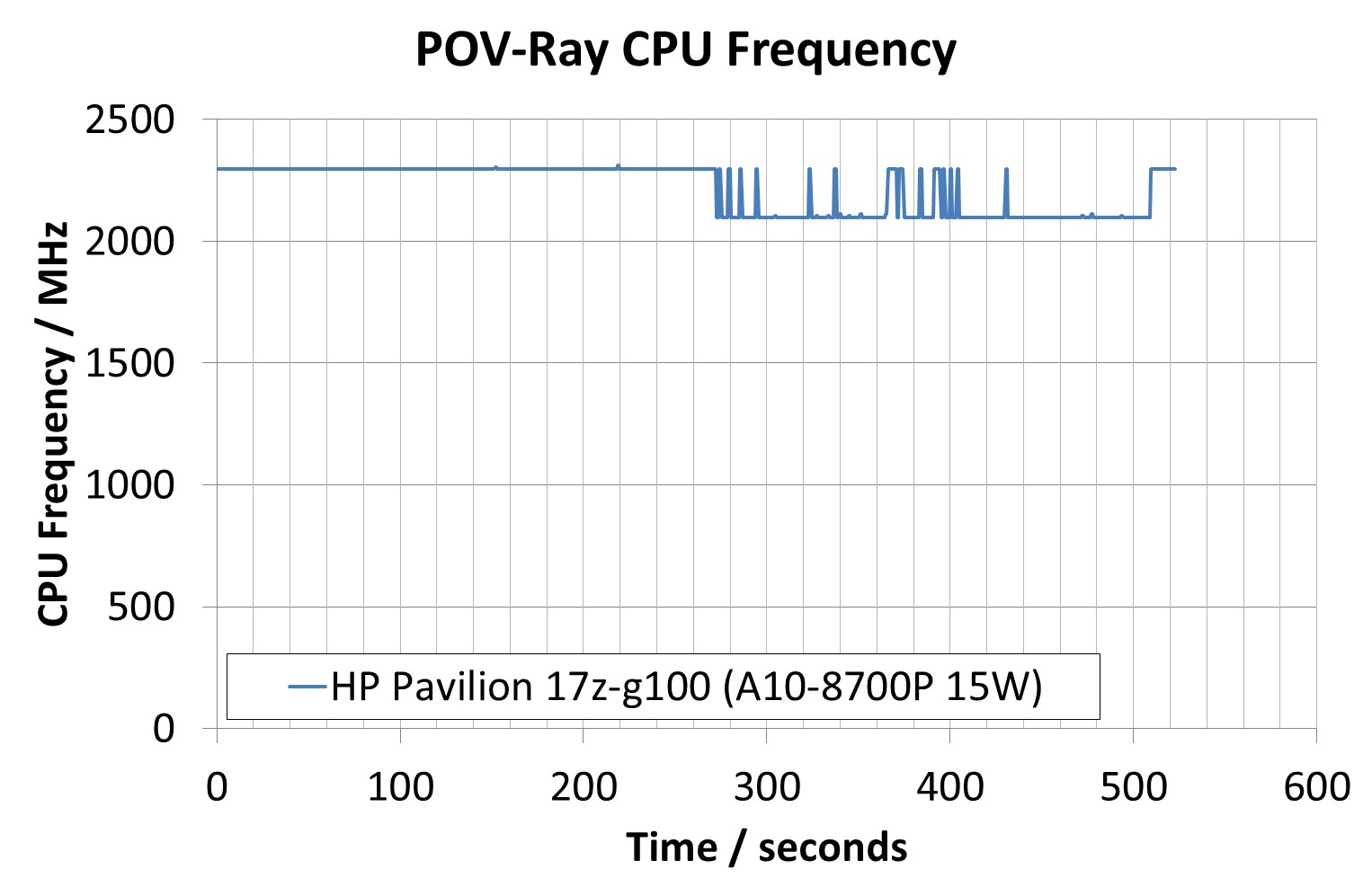
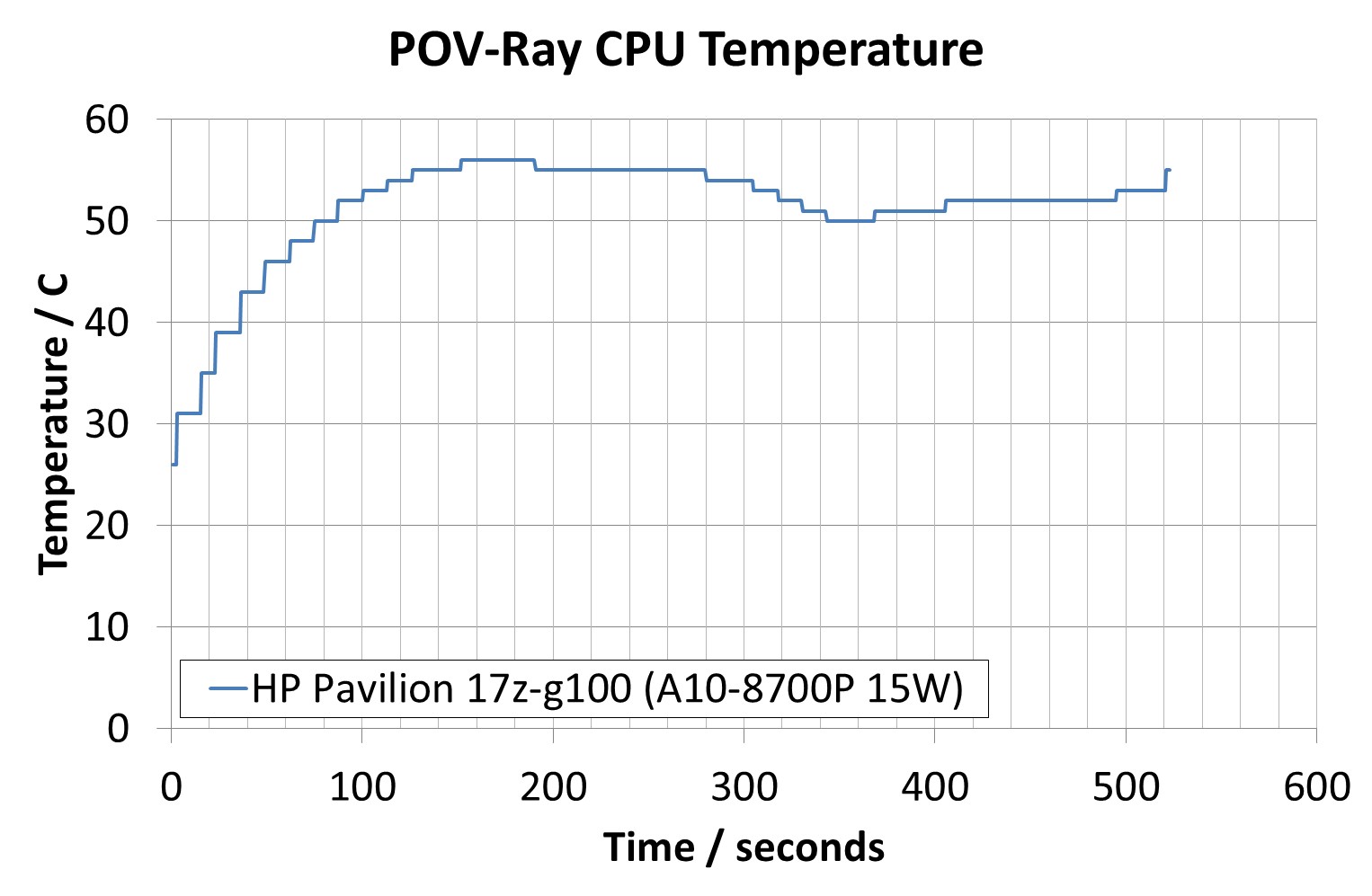


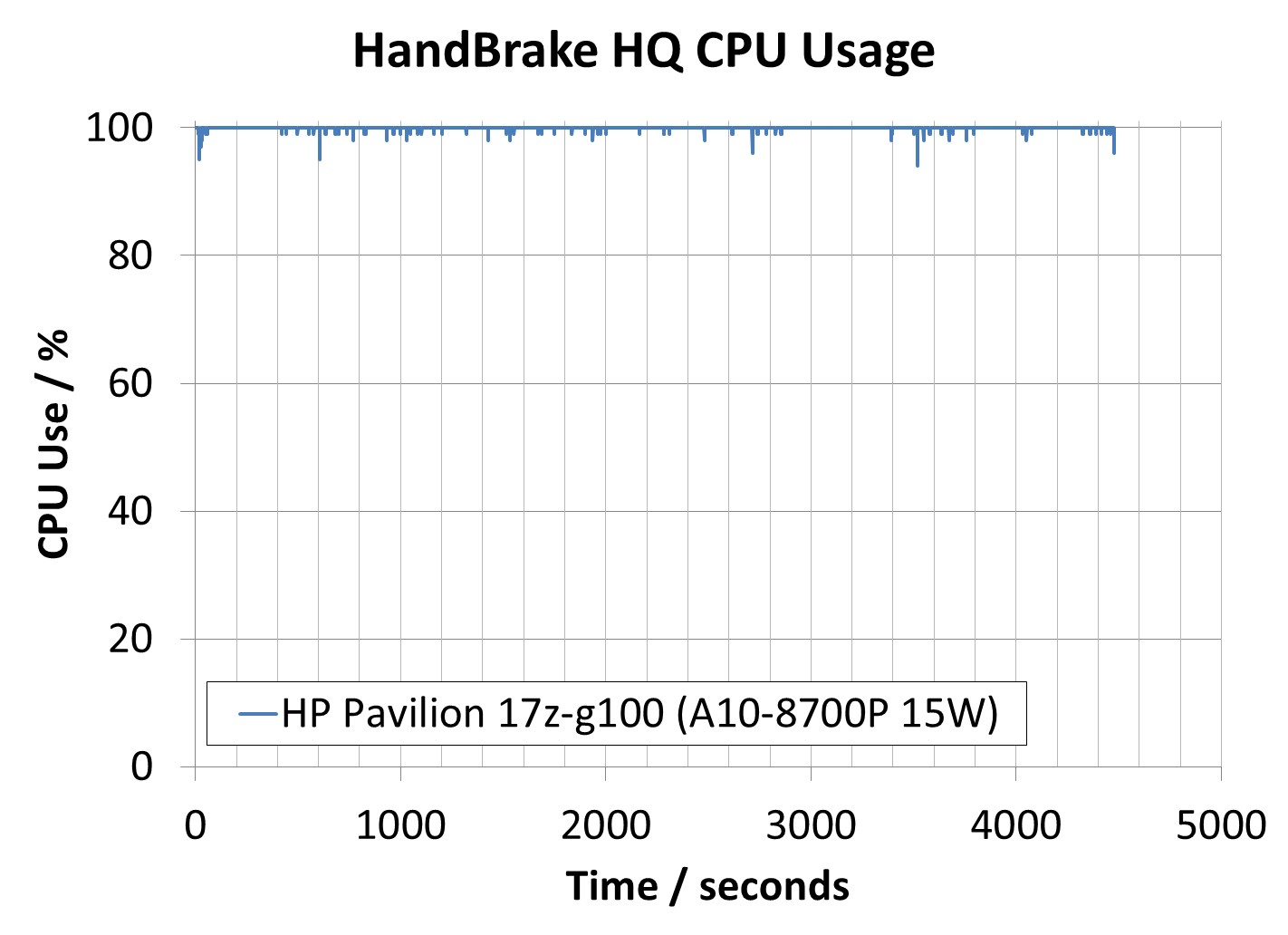

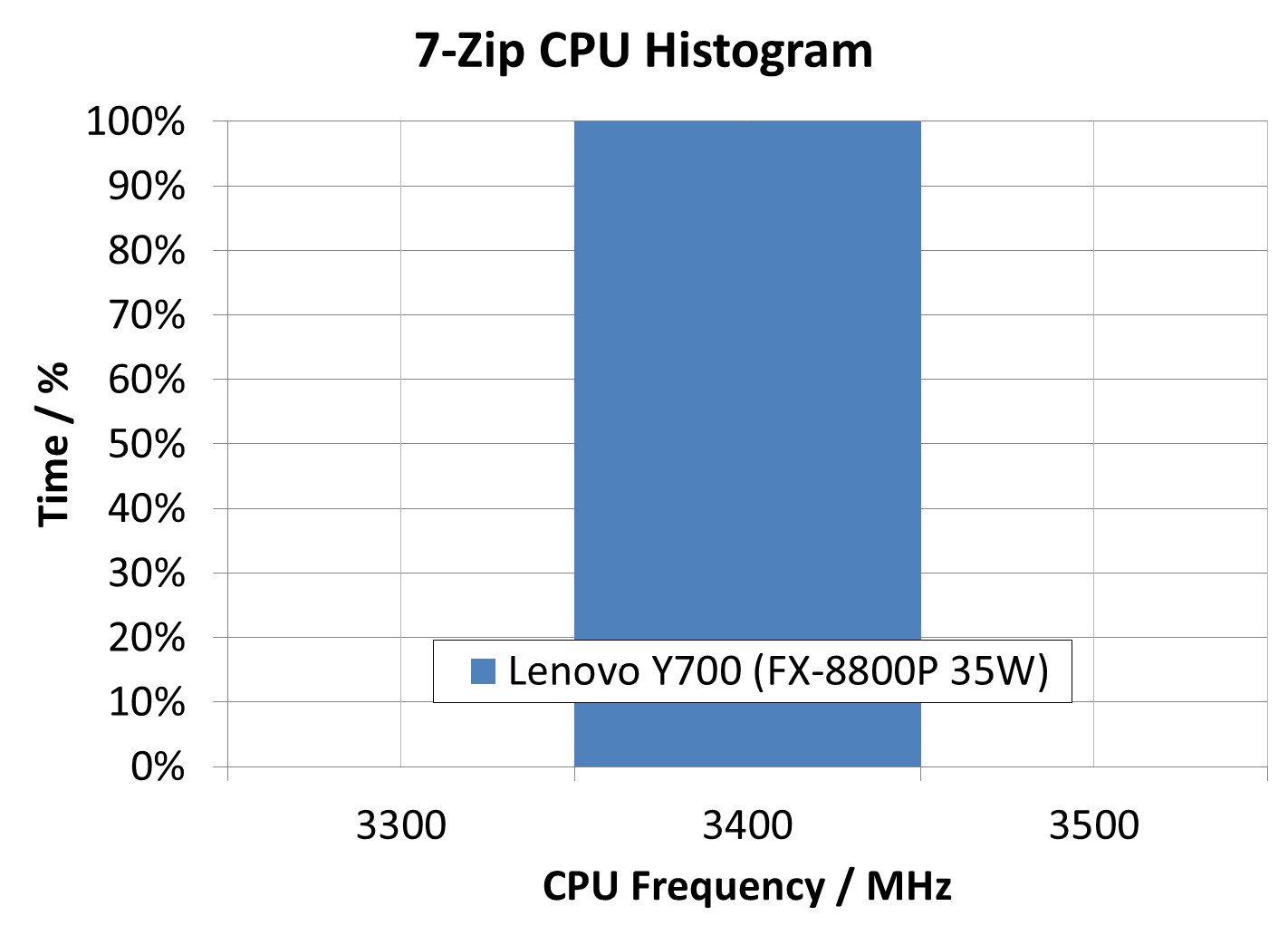









175 Comments
View All Comments
LarsBars - Friday, February 5, 2016 - link
I am really surprised that with AMD's current objectives, and strength in graphics, they didn't make the decision to have the cat cores use dual-channel memory controllers. Intel Atom x7 uses a dual-channel controller.I am really happy to see AMD's long-term decision making. I've read them saying things like "Going forward, we don't want to be regarded as the ultra-low cost option." Which hopefully means the end of articles like this one.
GREAT article, Ian.
bluevaping - Saturday, February 6, 2016 - link
Zen-L with single channel memory? I hope for none...leopard_jumps - Saturday, February 6, 2016 - link
I expected much more from AMD ! Very disappointed .mdriftmeyer - Saturday, February 6, 2016 - link
What's up with POV-Ray 3.7 Beta? POV-Ray 3.7 was released in November 3, 2013.MUSON - Saturday, February 6, 2016 - link
Notebookcheck.net tested the HP Elitebook 745 G3 with a dual channel setup. Performance gains range anywhere between 40% and 50% with gaming.http://www.notebookcheck.net/HP-EliteBook-745-G3-N...
leopard_jumps - Saturday, February 6, 2016 - link
Good find ! Yet the performance is insufficient . GT 940M is the better choiceleopard_jumps - Saturday, February 6, 2016 - link
They call it Geforce 940M instead of GT 940M . Interesting why ?extide - Thursday, March 24, 2016 - link
Both are somewhat incorrect, the proper name is Geforce GT 940Mzodiacfml - Saturday, February 6, 2016 - link
I love the graphs and detail. In the end there's one simple fact which is giving AMD the problem. It is Chipzilla's cash and capability in process nodes. Since you had the good point of mentioning that, most of the time, the SoC didn't mattered to consumers as probably because of good enough performance, AMD's simple goal is to achieve Intel's same process advantage for its known values.AMD's chips are too big now with half the price of Intel's chips. They are selling near costs and is fighting for survival only. AMD's team is probably excited with their partnership with Samsung as this will put them again close to Intel in terms of process node advantage.
I believe, it didn't matter for AMD with the shortcomings of available devices as their goal seems to be surviving while continue research and development for future products and process nodes and put them back in the game.
zodiacfml - Saturday, February 6, 2016 - link
I just saw some benchmarks with dual-channel memory and they are pretty impressive for entry level gaming on a 1366x768. I could have bought this versus an i5-5200 laptop I bought last year. But then, I haven't seen any Carrizo in the local market yet.